Made in the shade: Eclipse mixes science, magic for many in Valley
| Published: 04-08-2024 6:53 PM |
AMHERST — Residents across the Pioneer Valley turned out in force to witness a rare solar eclipse on Monday, with western Massachusetts witnessing a 95% coverage of the sun by the passing moon.
Despite being outside the path of full totality, which passed through northern New England in Vermont, New Hampshire and Maine, it didn’t stop local residents from gathering together to see the eclipse. At UMass Amherst, hundreds witnessed the historic event while sitting on muddy ground around the campus’ Sunwheel, a stone circle modeled after Stonehenge to track the solstices. Cars lined the road along Stadium Drive at the campus, with a food truck serving burgers, snacks and sodas to those gathered.
“We’re just glad to be around people, experiencing the same thing at the same time,” said Mindy Sahner, an Amherst resident who said she saw her first eclipse at age 3 in 1959, while living in New Jersey. “It made a big impression on me,” she recalled of that first eclipse.
Katharine Waggoner, another resident of Amherst, took her two children, Elizabeth, 9, and John, 12, out to the Sunwheel, after the school district let class out early to allow families to view the eclipse.
“This feels like one of those really neat community-coming-together moments where you get to have the magic and the science together,” Waggoner said.
“It’s one of the few things that happens in life that makes you really recognize that you’re like a tiny speck flying around on a rock.”
Almost everyone in North America was guaranteed at least a partial eclipse, weather permitting.
It was the continent’s biggest eclipse audience ever, with a couple hundred million people living in or near the shadow’s path.
Article continues after...
Yesterday's Most Read Articles
 A Waterfront revival: Two years after buying closed tavern, Holyoke couple set to open new event venue
A Waterfront revival: Two years after buying closed tavern, Holyoke couple set to open new event venue
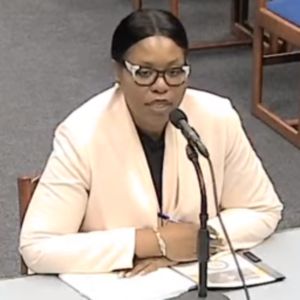 Island superintendent picked to lead Amherst-Pelham region schools
Island superintendent picked to lead Amherst-Pelham region schools
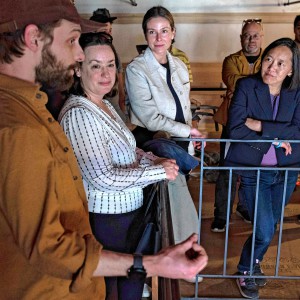 Music key to Northampton’s downtown revival: State’s top economic development leader tours city
Music key to Northampton’s downtown revival: State’s top economic development leader tours city
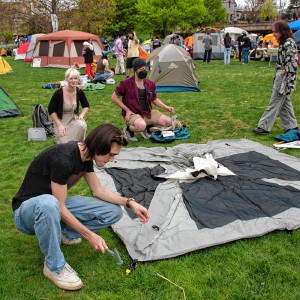 Pro-Palestinian encampment disperses at UMass, but protests continue
Pro-Palestinian encampment disperses at UMass, but protests continue
 Area property deed transfers, May 2
Area property deed transfers, May 2
 Amherst council hears call to scale back Jones work
Amherst council hears call to scale back Jones work
The show got underway in the Pacific before noon EDT. As the darkness of totality reached the Mexican resort city of Mazatlán, the faces of spectators were illuminated only by the screens of their cellphones.
Clouds blanketed most of Texas as the total solar eclipse began its diagonal dash across land, starting along Mexico’s mostly clear Pacific coast and aiming for Texas and 14 other U.S. states before exiting over the North Atlantic near Newfoundland.
At Lilly Library in Florence, people gathered on the lawn sharing eclipse glasses and munching on space-themed snacks like moon pies and Milky Ways. Children played in the background, weaving in and out of lawn chairs and blankets.
“I saw this piece of advice online that said to look not just at the eclipse but look around you at what’s happening to other people,” said Olive Amdur, who went to the library for the eclipse. “I’m just chuckling to myself at all the people staring in the direction of the sun.”
People used various tools they brought to view the eclipse, many using glasses that were handed out at several gathering events. Others used pinhole cameras to look into cereal boxes to view the eclipse, while others used colanders, the sun projecting many little crescent shapes onto the ground.
“It was very fun, very unusual just to notice the temperature dropping and just the quality of the light changing,” Northampton resident Laura Battles said.
Though there was a observable dimming of light during the peak coverage in the region at around 3:25 p.m., even 95% coverage, causing the sun to resemble a waning crescent moon, isn’t enough to cause daytime darkness, explained Daniela Calzetti, the head of the astronomy department at UMass Amherst.
“The sun is so bright, even 95% coverage is like a very cloudy day,” Calzetti said. “Totality is more stunning because practically the sky becomes dark. And there is also animal behavior associated with that.”
During Monday’s full eclipse, the moon slipped right in front of the sun, entirely blocking it. The resulting twilight, with only the sun’s outer atmosphere or corona visible, would be long enough for birds and other animals to fall silent, and for planets, stars and maybe even a comet to pop out.
The out-of-sync darkness lasted up to 4 minutes, 28 seconds. That’s almost twice as long as it was during the U.S. coast-to-coast eclipse seven years ago because the moon is closer to Earth.
So when can the Pioneer Valley expect another solar eclipse? Not until 2044, Calzetti said.
“The next one won’t be totality here, either,” she said. “There will be totality somewhere in the central U.S., around Minnesota.”
If residents don’t want to wait that long, they might want to look into booking a trip to Europe — the next eclipse passing over inhabited areas will occur in Spain and Iceland in 2026.
Material from the Associated Press was used in this story. Alexander MacDougall can be reached at amacdougall@gazettenet.com.

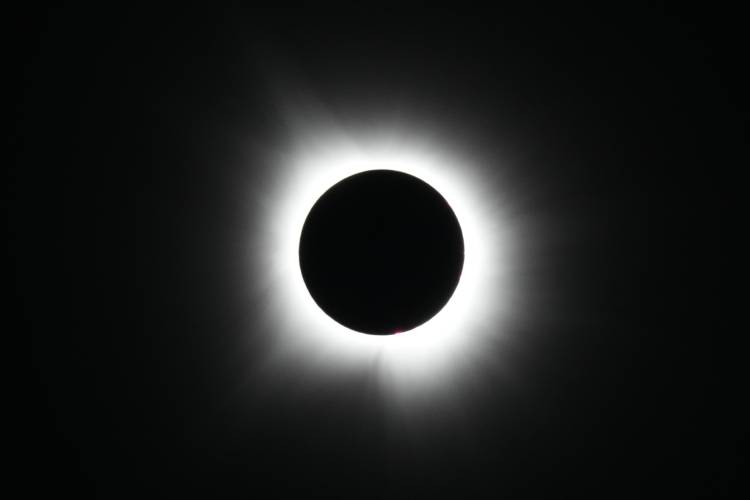
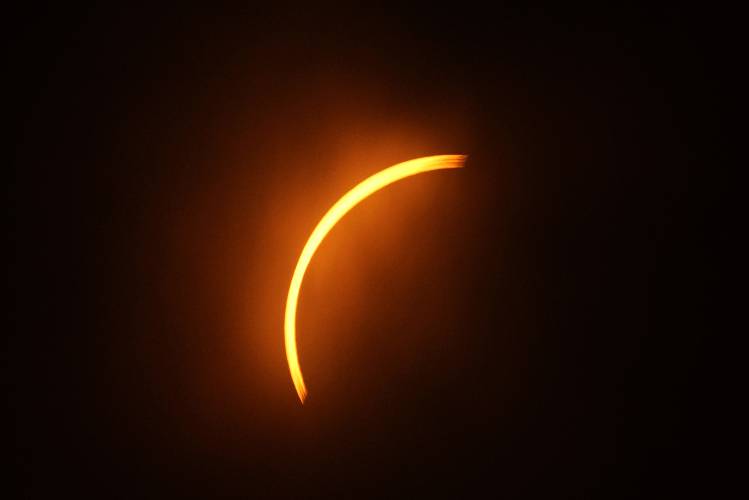
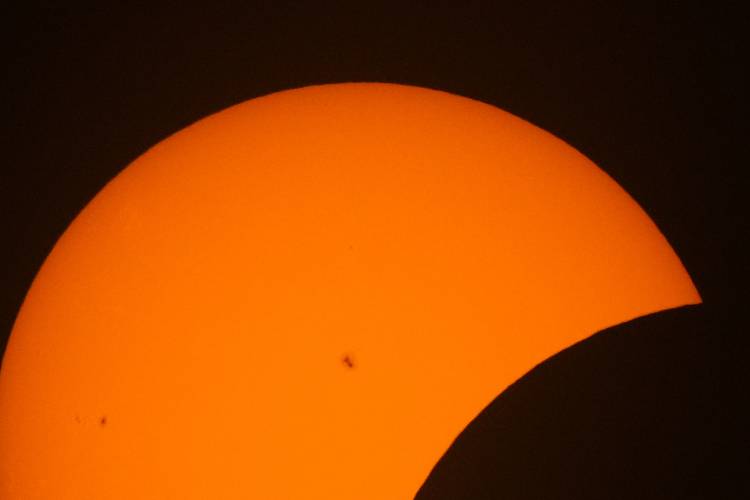
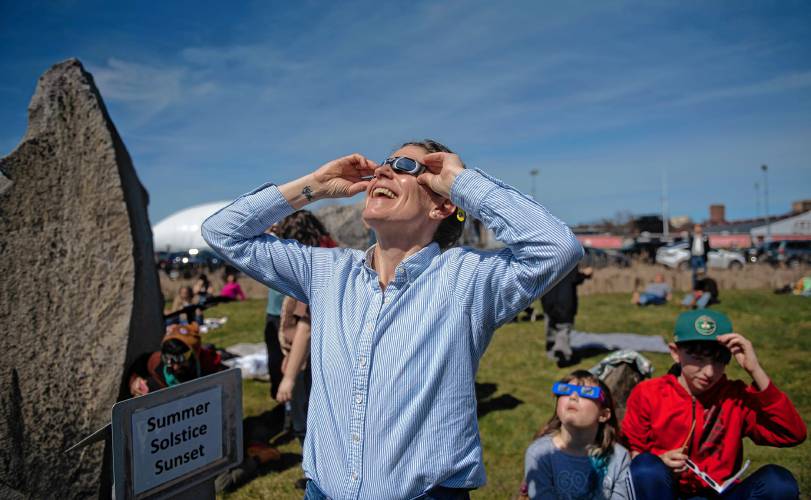
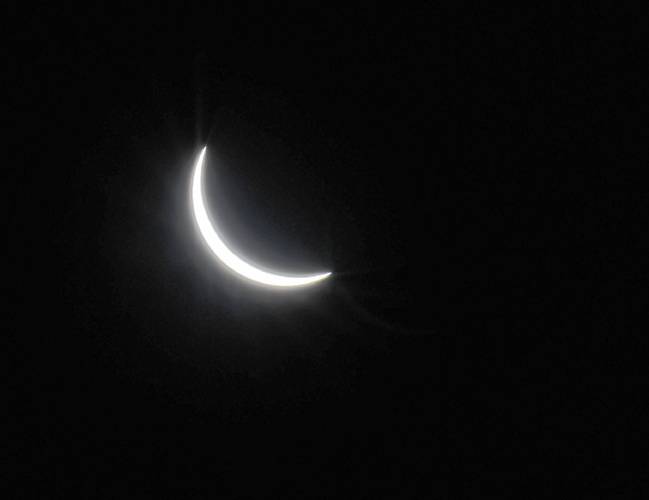

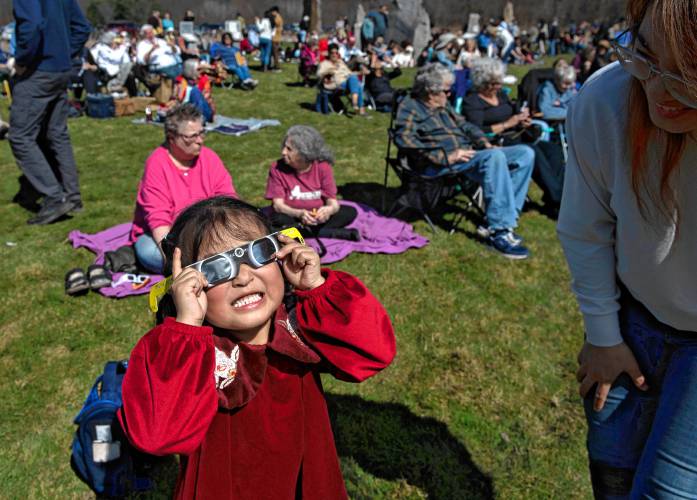
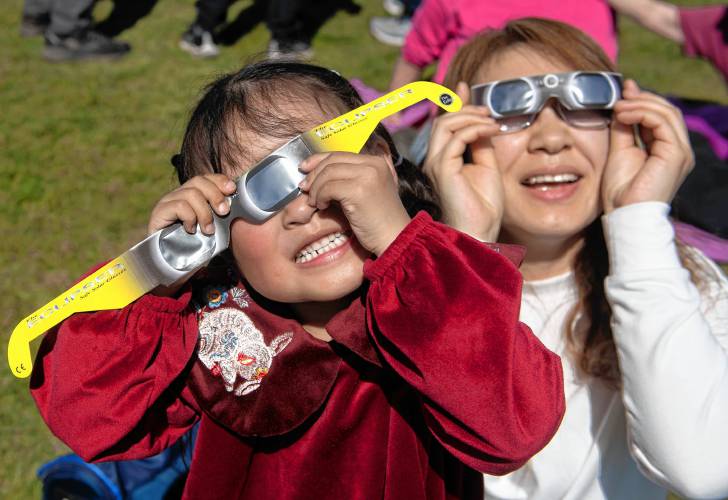
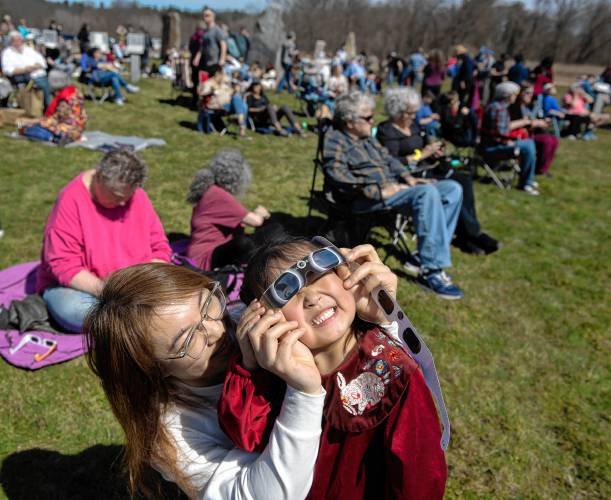
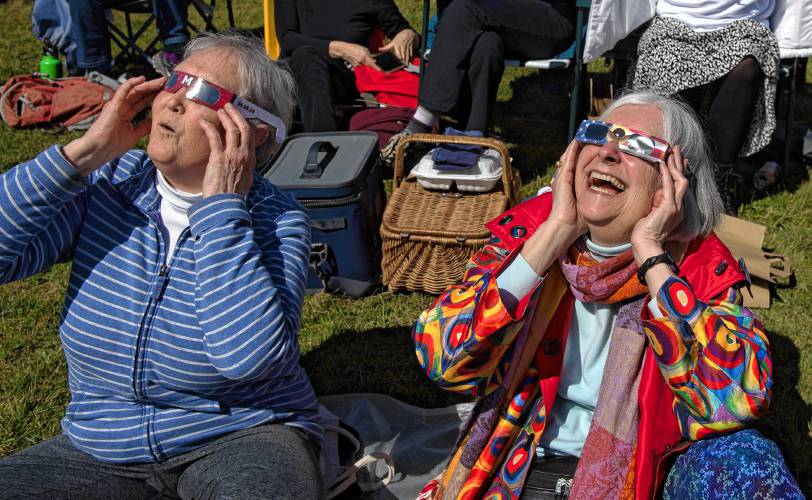
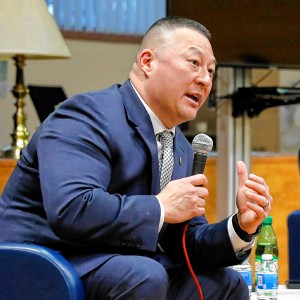 Amherst council confirms Gabriel Ting as police chief
Amherst council confirms Gabriel Ting as police chief
